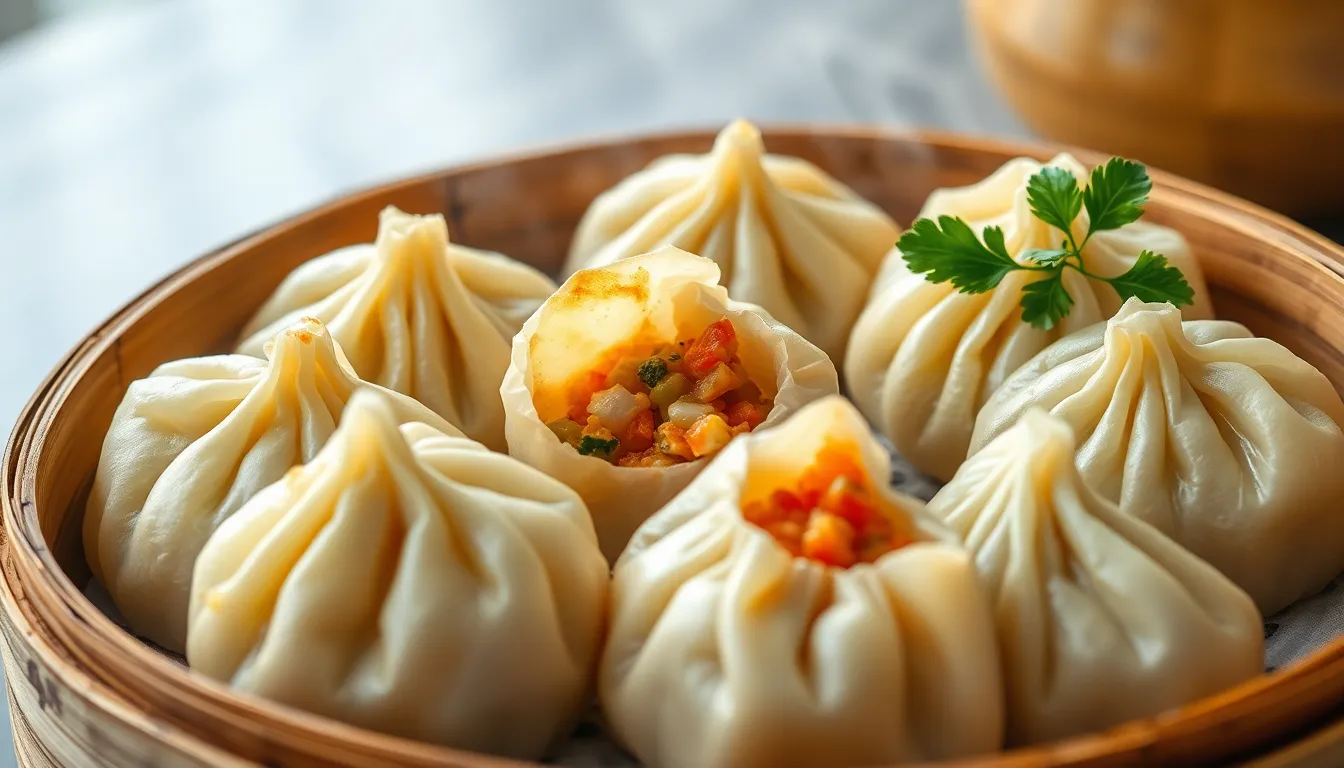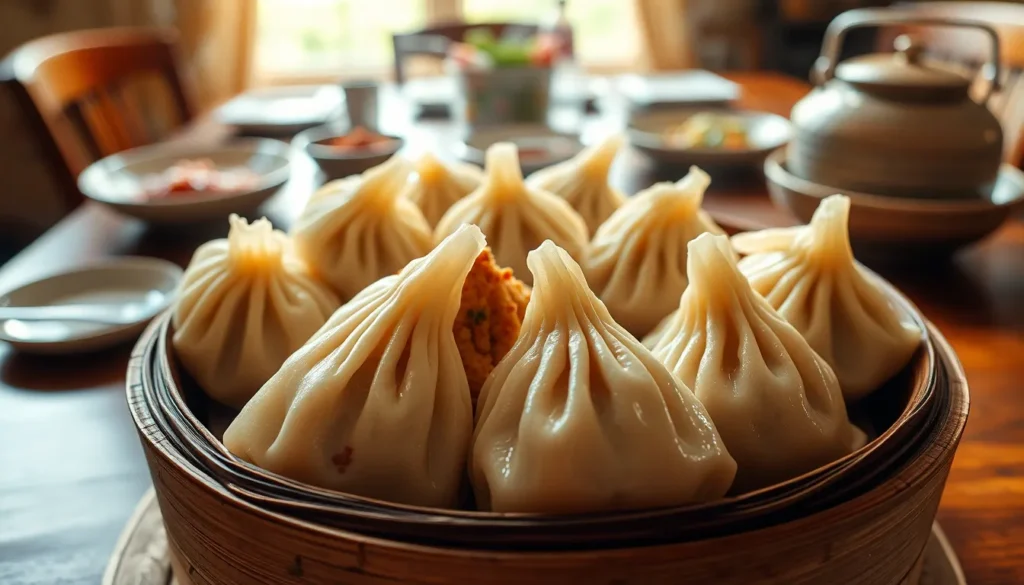Table of Contents
ToggleBikimsum, the deliciously decadent dumpling that has captured hearts and taste buds alike, might just be the culinary equivalent of a stubborn toddler. Once it’s in your belly, you might wonder why this delightful dish seems to throw a party in your stomach that lasts longer than expected.
Understanding Bikimsum
Bikimsum features a complex composition that influences digestion time. The dumplings typically contain a combination of carbohydrates, proteins, and fats. These components interact in the digestive process, leading to a longer breakdown period compared to simpler foods.
Another factor affecting digestion is the filling. Ingredients like meat or dense vegetables can slow gastric emptying. Such fillings require more time for enzymes to break down, extending the overall digestive timeline. Chewy wrappers also contribute to this delay, as they add texture and density, increasing chew time and, consequently, digestion time.
Fiber plays a crucial role as well. Some varieties of Bikimsum contain higher fiber fillings, enhancing the feeling of fullness while also slowing digestion. The combination of high-fiber ingredients and protein-rich elements further prolongs transit time through the stomach.
Hydration levels influence digestion rates too. Sufficient water consumption aids in breaking down food more effectively. If dehydrated, the digestive process slows, and the dumpling’s complex makeup can exacerbate this issue.
Cooking methods also impact digestion. Steaming, the traditional preparation method for Bikimsum, retains moisture and texture. This method may enhance the energy-dense nature of the dish, requiring more time for digestive enzymes to process the ingredients fully.
Understanding these factors clarifies why Bikimsum presents a longer digestion journey. Each component significantly influences how quickly or slowly it moves through the digestive system, contributing to the enjoyment that lasts beyond the meal.
The Composition of Bikimsum

Bikimsum’s digestion time stems from its diverse ingredients. Each component significantly impacts how the body processes this popular dumpling.
Ingredients Involved
Dumpling wrappers contain refined flour, which contributes to carbohydrate content. Filling ingredients may include various proteins such as pork, shrimp, or chicken. Dense vegetables like mushrooms or cabbage also enrich the mixture. Together, these elements create a complex mix that requires time for breakdown. Additionally, the fat content from oils or meats slows down the digestive process. Overall, the combination of carbohydrates, proteins, and fats leads to sustained digestion times.
Nutritional Challenges
Bikimsum has high-caloric density due to its rich filling. The combination of proteins and fats often contributes to a lingering feeling of fullness. Some varieties include fiber-rich ingredients, promoting a slower digestive process. Caloric intake could pose a challenge for those monitoring their diet. Digestion slows when fiber interacts with other nutrients, leading to prolonged fullness. Additionally, hydration may affect digestion speed, making liquid intake essential during meals. It’s crucial to consider these nutritional factors when indulging in Bikimsum.
Digestion Process
Understanding the digestion process of Bikimsum reveals why it takes longer to break down in the body. The breakdown involves multiple stages, starting in the mouth and moving through the stomach and intestines.
How Digestion Works
Digestion begins in the mouth with chewing, where saliva starts breaking down carbohydrates. In the stomach, gastric juices further decompose the food. The small intestine follows, absorbing nutrients from the digested Bikimsum. Each stage requires time, especially due to the complex ingredients in Bikimsum. Fibers present in vegetables and the high-fat content from meats slow down the process. Enzymes also play a vital role, and their activity contributes to the time taken for complete digestion.
Factors Affecting Digestion Time
Several factors impact how long Bikimsum takes to digest. The type of filling significantly influences this duration. Proteins, like those found in meat or shrimp, require longer to break down compared to simpler carbohydrates. Wrappers made from refined flour also add to the digestion time due to their dense structure. Additionally, hydration levels can alter digestion speed. Sufficient hydration aids in breaking down food, while inadequate water intake can prolong the process. Cooking method matters too; steaming maintains moisture, which aids digestion compared to dry cooking methods.
Specific Reasons for Long Digestion
Bikimsum’s complex composition contributes significantly to its prolonged digestion time.
Fiber Content
Fiber’s presence in some Bikimsum varieties affects digestion duration. High fiber content slows stomach emptying, which fosters a feeling of fullness. This fullness can lead to a longer digestion process since fiber requires considerable time to break down. Various fillings, such as vegetables, often enhance fiber levels, thus influencing overall digestion. Sustained fullness and gradual digestion result in a satisfying eating experience.
Fat Content
Fat content also plays an essential role in digestion time. Fats take longer to break down compared to carbohydrates and proteins, prolonging the entire digestive process. In Bikimsum, rich fillings like pork or lamb introduce higher fat levels. The body requires more time to metabolize these fats, leading to a slower digestion rate. The creamy texture from fat also contributes to longer-lasting satisfaction after consumption.
Cooking Methods
Cooking methods impact digestion significantly, especially steaming. Steaming preserves moisture and nutrients, affecting the texture of Bikimsum. A moist, chewy wrapper needs more effort to break down, contributing to slower overall digestion. Additionally, steaming keeps ingredients intact, reducing the immediate breakdown of complex components. These factors collectively enhance the duration of the digestive process while providing a flavorful dining experience.
Bikimsum’s lengthy digestion process is a result of its intricate composition and preparation methods. The combination of carbohydrates proteins and fats along with the chewy wrappers creates a satisfying yet slow breakdown in the digestive system. Factors like fiber content and high-fat fillings further contribute to a feeling of fullness while prolonging digestion time.
Understanding these elements not only enhances appreciation for this beloved dish but also highlights the importance of hydration and mindful eating. The delightful experience of Bikimsum extends beyond the plate inviting diners to savor each moment as they await the flavors to fully unfold in their bodies.








